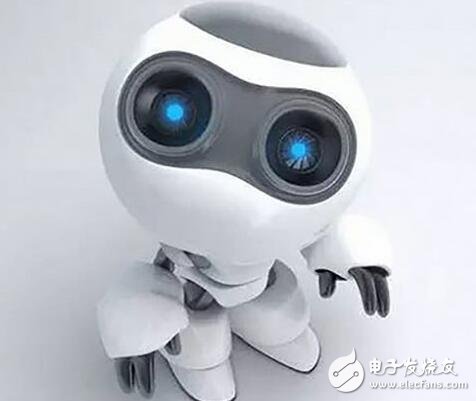With the deployment of policies, capital, and enterprises at different levels, the development of service robots in China has rapidly entered the high-speed fission period and has become the darling of the market. Even though the prospects are clear, the service robot market has not yet fully opened. In 2017, whether our service robots can break this development deadlock, let us wait and see.
In 2016, the artificial intelligence and robotics industry not only became an important part of China's national innovation strategy, but also became the darling of the market and capital. At present, the robot industry has formed a prototype of an important emerging industry. The annual sales volume of industrial robots continues to soar. Service robots have developed a series of representative products and applications in scientific research, medical health, education and entertainment, and family services. The service belongs to China's strategic emerging industry. It can not only cope with the problems of rising labor costs and aging population, but also support and lead the development of related technologies and industries, promote the development of intelligent manufacturing equipment, enhance military defense strength, and improve emergency response. The ability to event and the development of medical rehabilitation equipment are of great significance.

Although the service robots in China started late, the development is not slow, the industry highlights frequently, and individual companies have entered the world's leading ranks in certain fields. Different from other countries, at present, China pays more attention to the service robot industry related to national security and people's livelihood science and technology, and strives to break through the key technologies that restrict the development of China's service robot industry, from local to global, and cultivate into China's future strategic emerging industries. As far as the future development is concerned, the demand for service robots comes from the civilian fields such as education, entertainment, smart home, and other aspects of social public service areas such as helping the elderly and helping the disabled, as well as disaster relief, aerospace and seabed exploration.
With the strong support of the state and relevant government departments, in 2017, China's professional service robots, such as medical robots and military robots, will be rapidly used for industrialization and marketization, and will be used as people's consumption levels increase. Sales of home service robots such as education, home cleaning, entertainment, helping the elderly and helping the disabled will continue to grow rapidly. With the strong support of the policy, China's service robot industry has expanded rapidly, and the industrial robot industry has formed an industrial park based on the Yangtze River Delta, the Pearl River Delta and the Bohai Rim region. It is foreseeable that based on specific and potential market demands and existing technical foundations, service robots are expected to become the pioneers of China's robotics industry to catch up with the world's advanced level.
Technical weapon to help the construction of the industry to a new levelService robot is a fusion of a series of new technologies. Service robots are actually the integration and implementation of various technologies, including voice interaction, navigation and positioning, motion control, background scheduling management, multi-sensor technology, communication and other multi-domain technologies. In order to meet the needs of application functions and maintain its intelligent stability, the main key technologies of service robots are as follows:
Positioning and navigation technology: The industry's leading service robot company, 80% of them use SLAM technology. Simply put, SLAM technology refers to the complete process of positioning, mapping, and path planning for robots in an unknown environment.
Motion Control Technology: Currently, among all types of robots, wheeled and tracked service robots have better balance and are more stable during exercise. From the current technical development and practicality, wheeled and crawler-type robots are clearly more in line with market demand.
Multi-sensor fusion technology: The sensor is like the "five features" of the robot. At present, the mainstream service robots in China are mainly equipped with infrared sensors and ultrasonic sensors. In fact, if the service robot wants to accomplish more and more complex tasks, more sensors are needed.
Deep learning algorithms: Traditional robots cannot understand semantics and environment, and the emergence of deep learning algorithms has changed this situation. However, due to factors such as technical level, big data acquisition difficulties, and cloud computing efficiency, there are still some bottlenecks in deep learning algorithms. It may take a while to be widely used in service robots.
to sum upIn April 2016, the Ministry of Industry and Information Technology, the National Development and Reform Commission and the Ministry of Finance jointly issued the "Robot Industry Development Plan (2016~2020)", clearly stating that during the "13th Five-Year Plan" period, the performance and quality of robotic products reached the international level, and key components were significantly breakthrough. By 2020, the annual output of China's self-owned brand industrial robots will reach 100,000 units, and the annual sales revenue of service robots will exceed 30 billion yuan. At the same time, regardless of policies, capital, and enterprises all at different levels, the development of service robots has rapidly entered a period of high-speed fission. However, even though the outlook is quite clear, service robots are facing the status quo that has not yet fully opened up the market. In 2017, whether our service robots can break this development deadlock, let us wait and see.
Dimmable Led Driver
Dim your LED-based luminaries with our dimmable LED drivers. We have Dimmable LED driver to function with a number of different dimmers including 0-10v, Triac, PWM and more. Power your LED Luminaries with our LED Drivers. Our LED Drivers are designed for applications such as: LED home Lighting, LED Decorative Lighting, Theatre/Stage Lighting, traffic signals, and so much more. If your LED cluster or string configurations that already include a constant driver as part of the assembly, shop our Constant Voltage LED Power Supplies .0-10v dimmer switch touch panel 2. dali dimmable led driver 3. led dimming driver
- Dimmable LED driver: dimmable with TRIAC and trailing edge ELV-based dimmers
- UL8750 recognized,FCC, ClassP
- AC input: 100-277VAC (230VAC nominal version available)
- Operating temperature: -30~+90°C case temperature
- Compact plastic enclosure for integrating into most light fixtures and standard electrical junction boxes
- Mounting clips featuring installer selectable mounting locations
- 5 year warranty

Dimmer Switch Touch Panel,Dali Dimmable Led Driver,Led Dimming Driver
ShenZhen Fahold Electronic Limited , https://www.fahold.com